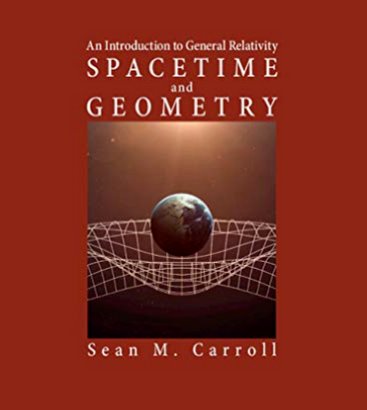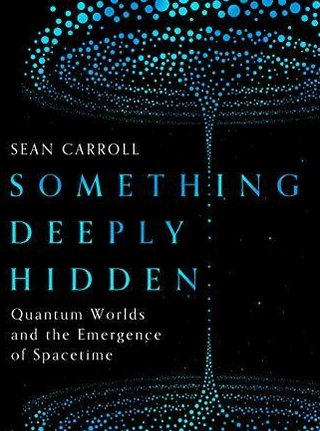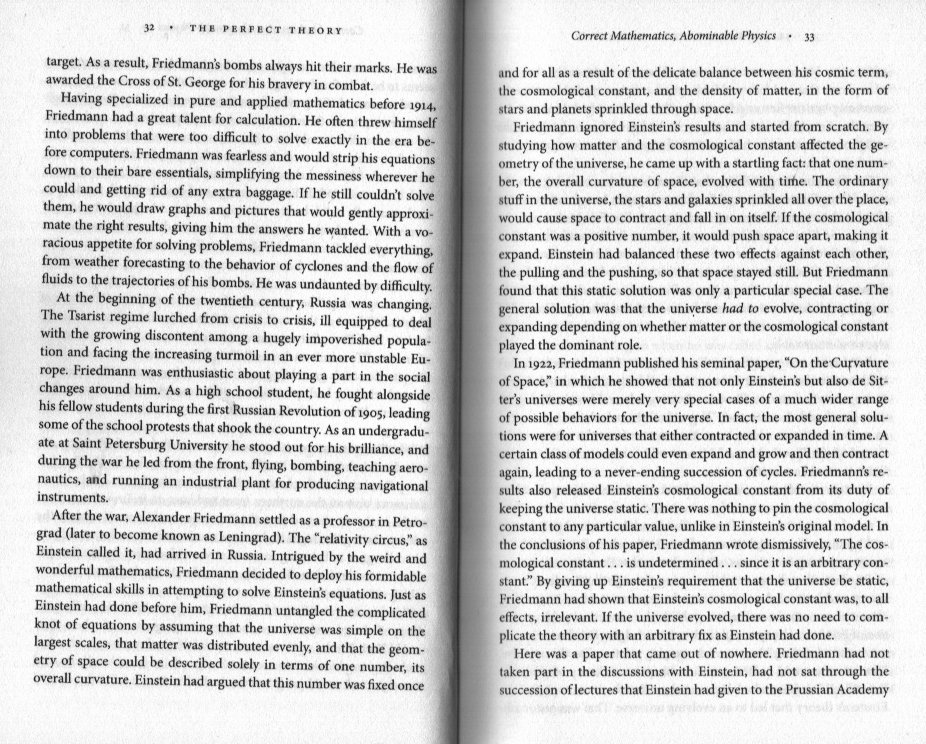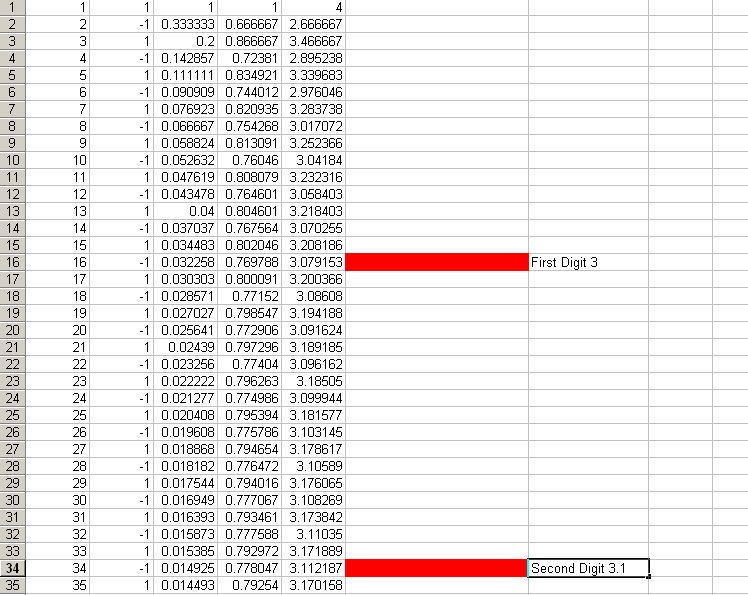-
Posts
18316 -
Joined
-
Last visited
-
Days Won
104
Content Type
Profiles
Forums
Events
Everything posted by studiot
-
In all probability you have misread or misunderstood something he said. For instance it would normally be OK to say the the voltage is a scalar, but saying the wire is a scalar makes no sense at all. Note this thread is about separate space and time, as opposed to 'spacetime' Our very own Mordred is fond of saying that 'space is just (empty) volume. Volume is normally a scalar. Now the interesting thing about area and volume and higher dimensional manifolds is that they can also be scalars or vectors or higher rank tensors, in the right circumstances. But once again how does their classification affect whether they are emergent or not ?
-

difference between upvote and like vote
studiot replied to TheVat's topic in Suggestions, Comments and Support
"it's very frustrating... " Is that because stoned is your preferred state, or because you once visited Hetty Pegler's Tump ? 🙂 -
I don't know much about Sean Carroll, but I doubt very much that is the case, considering his biography. In any event there is no version of 'spacetime' that is a scalar. In this context scalars are Tensors of zero rank but the minimum tensor rank for a spacetime coordinate system is 1. If you want a readable intoduction to the maths of ths try the NASA publication by Kolecki A more comprensive treatment appeared in 2006 but I recommend beginners start with the 2002 paper listed in the quote https://ntrs.nasa.gov/api/citations/20050175884/downloads/20050175884.pdf Me too. +1
-

Birds Aren't Real; Another Denial Movement that's Cuckoo
studiot replied to joigus's topic in The Lounge
If the Byrds weren't real, how did Dylan make his voice so melodious ? -

Particle Gravitational Oscillator & Wave Function
studiot replied to Kartazion's topic in Speculations
If you insist on spreading this topic over more than one thread, I am pulling out. Swansont has asked you the same question I already asked in the other thread, but not answered. -

Particle Gravitational Oscillator & Heisenberg's Uncertainty Principle
studiot replied to Kartazion's topic in Speculations
I don't think it is a good idea to spread this discussion over two threads so I will ignore this new one. If I can recap my understanding of what you are proposing, You propose a classical charged particle (in particular an electron) jumping up and down in a graded gravitational field becausing it is somehow receiving upward kicks (impulses) every time it falls back to its lower point under gravity. This up and down movement generates an EM field, oscillating in sympathy with the up and down movement of the particle. Is my interpretation of your proposal correct ? -
Enntropy is not about 'things left over'. The important word in your phrase energy dispersal is not energy but dispersal. Note the difference between dispersal and dissipation. Dispersal means spreading out, and becoming less concentrated, it does not imply disappearing. Dissipation implies disappearing or weakening. A good analogy to think about is a lump of sugar added to your coffee. When you first add the sugar there is a large quantity in one small part of the cup and little or nothing in the rest. As you stir, the sugar spreads out over the entire volume of coffee, becoming evenly concentrated everywhere. This spreading out or evening out is driven by entropy. But we do not measure entropy in lumps of sugar, we measure it in terms of energy because energy is a property common to many different spreading out processes.
-

Particle Gravitational Oscillator & Heisenberg's Uncertainty Principle
studiot replied to Kartazion's topic in Speculations
Like swansont I look forward to your maths about an electron moving at the speed of light. Yes Photons move at the speed of light but I would like to see what mechanism you propose to apply an 'impulse' to a photon -

Difference between two moles in a reacion
studiot replied to Questionasker's topic in Applied Chemistry
I wonder if you are getting confused about the difference between 1 mole and 0.001 moles per litre ? The first is an absolute quantity ; the second is a concentration. We try to work in integers (just as you say) when considering chemical reactions mathematically. 4Fe + 3O2 = 2Fe2O3 So 4 moles of iron reacts with 3 moles of oxygen to produce 2 moles of iron oxide. But the atomic mass of iron is 56 grammes per mole. So 4 moles is 4 * 56 = 224 grammes, which is a lot of iron to be putting into a test tube or reaction flask. We are more likely to react one tenth of this or 4 * 5.6 grammes (= 22.4grammes = 0.4 mole) with 0.3 moles of oxygen. -

Particle Gravitational Oscillator & Heisenberg's Uncertainty Principle
studiot replied to Kartazion's topic in Speculations
A particle of mas m moves at the speed of light ? So m = 0 ? -

Particle Gravitational Oscillator & Heisenberg's Uncertainty Principle
studiot replied to Kartazion's topic in Speculations
So how is the question I was asking. In other words why is a bouncing ball restricted to certain gravitational energy levels ? And if it is, then how is it accepting this regular input of 'impulses' ? What you are describing seems more like a classical resonance phenomenon to me. -
It is a pity Holmes had all too often added unpleasant remarks to what started off as an excellent comment such as this one. A good question is "Is there a scale of self awareness or is it all or nthing" The OP seems to have envisioned a sudden Skynet type episode where everything came about at once. But many living creatures surely have some measure of self awareness. For instance a pet cat seems to me to be very self aware and cognisant of what it wants. But it is still not as aware as a human.
-

Particle Gravitational Oscillator & Heisenberg's Uncertainty Principle
studiot replied to Kartazion's topic in Speculations
In what way is your oscillator quantum ? -

Particle Gravitational Oscillator & Heisenberg's Uncertainty Principle
studiot replied to Kartazion's topic in Speculations
So ? The pendulum oscillator I posted (Apologies for omitting the sketch at first) has a frequency given by f = [√(g/L)]/2π You should note this is independent of both the mass M and the height H from which the oscillation is initiated. g, L and 2π are of course all fixed. So the frequency is fixed. -
If anyone else is interested in studying (playing with) the convergence of the series you are welcome to the actual Excel spreadsheet. It is easy enough to extend to many more terms than 200.
-

Particle Gravitational Oscillator & Heisenberg's Uncertainty Principle
studiot replied to Kartazion's topic in Speculations
Why ? -
Yes that is the description the LR specialist gave me, thank you for the correction. +1 I seem to remember a similar feature on some Suburbans and/or Blazers we had in Saudi in the 1970s. But others had an automatic method.
-

Particle Gravitational Oscillator & Heisenberg's Uncertainty Principle
studiot replied to Kartazion's topic in Speculations
Really ? Here are two classical harmonic oscillators with exactly the same frequency but oscillator B has exactly twice the energy of oscillator A as it has twice the mass. As a matter of interest, what would happen to frequency if you kept the mass the same but increased the energy by increasing the original drop height used to start the oscillation ? The difference between classical and quantum oscillators is that quantum oscillators must have a non zero minimum energy or lowest energy level. Classical ones will work right down to zero minimum energy. This is how zeropoint energy and fluctuations arise in QM. Bother. Thank you Swansont for drawing me back to note I missed out the diagram. -
I remember my first Land Rover had manually set bosses on the front wheel hubs to activate / deactivate a 'differential lock'. I never properly understood it so I am looking forward to lots of explanation in this discussion.
-
How are you continuing anything as a new member and this is your only post ? Anyway welcome, what you say is true and you have provided an interesting diagram. But what it does not show is just how slow the convergence is for this method of calculating Pi. Here is a spreadsheet of the series. It takes 16 terms to confirm the first digit alone ( the 3). It takes 34 terms to confirm the second digit (so 3.1) And I only worked out the first 200 terms but it had still not confirmed the third digit (3.14) Many otherwise promising methods have this problem.
-
'If' is a very big word. 'All' is nearly as big.







